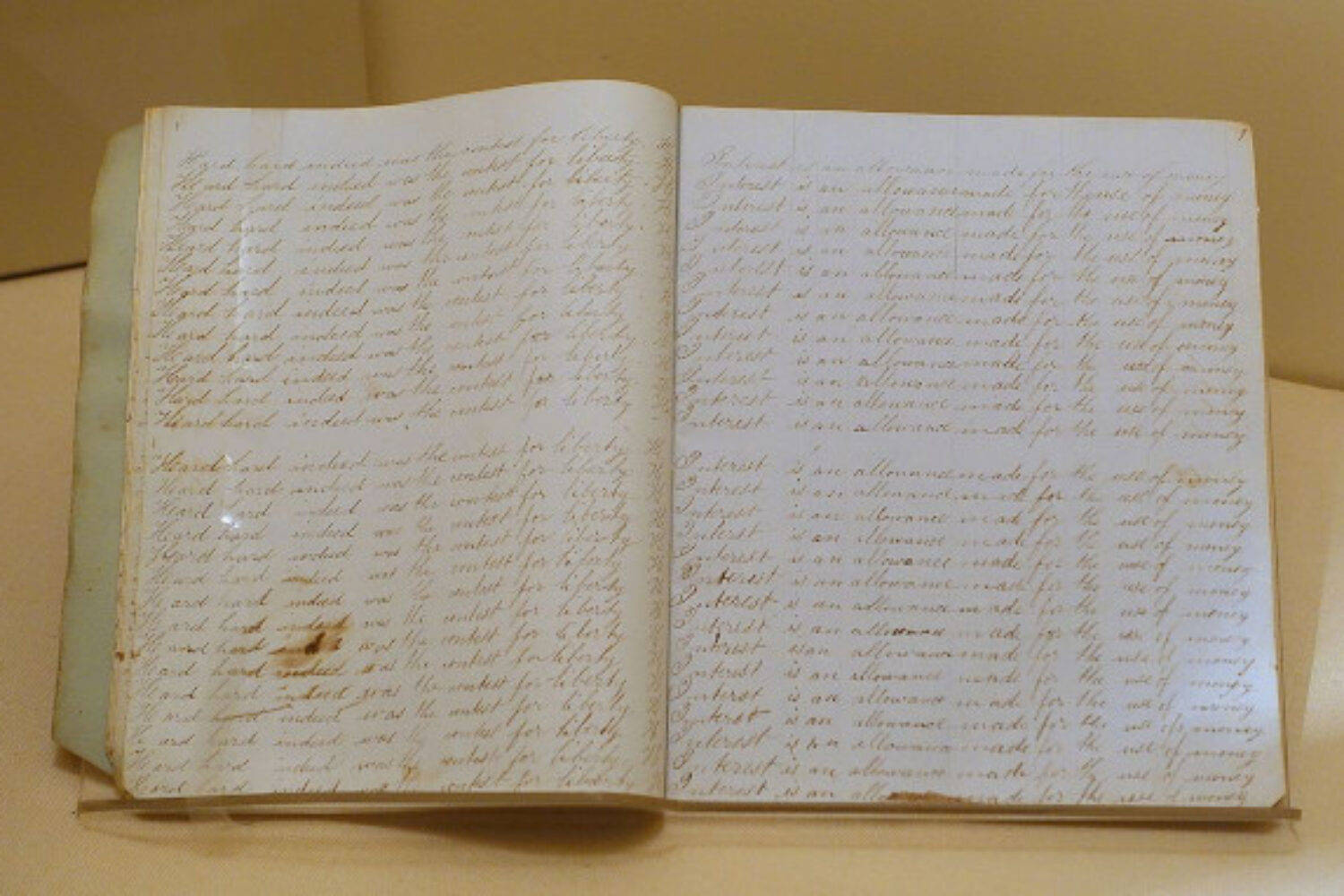I was a new mother, just beginning to learn about homeschooling, when an older friend told me about this old-fashioned method she used in her homeschool: Copywork. The mere mention of the word awakened thoughts of kind-but-strict schoolmarms, dusty slates, wooden desks, and inkwells. It was love at first, err, hearing… I was sold.
But when I actually started having my children do copywork, it turned out to be far better than I had even imagined!
Copywork is very, very simple; it would seem like an assignment this simple couldn’t make a very big difference in a child’s education… Yet we know from history that this method has been used to teach folks to read and write for thousands of years, across the spectrum of languages, nations, and cultures.
Why was copywork such a universal subject throughout world history, until recent times? Should we bring it back?
In short, Copywork is highly effective, and, yes, we should bring it back! While it’s an easy daily assignment, it teaches children on multiple levels, brilliantly. There are at least seven subjects you teach your children when you bring Copywork into your homeschool grammar school: Penmanship, Spelling, Punctuation, Grammar, Literature, Creative Writing, and Character. Sound too good to be true? Read on!
Penmanship
This is the obvious one, right? We make children copy writing so they can learn how to form their letters correctly.
And it works. You don’t need workbooks filled with letters written in dashed lines for the children to trace; you can write out a copyhead for your child each day, and he can copy it, just as masters (that’s you) taught pupils (that’s your kids) for thousands of years. This tried-and-true approach has a lot of advantages over handwriting workbooks: First, when you write by hand, it’s a natural handwriting that your children can learn, instead of the unnatural machine-produced letters in handwriting workbooks. But more importantly, your children will be much more motivated to do their handwriting lessons if you model for them that you take the time to write your letters nicely, than if you give them a workbook teaching them to form letters in a way that you don’t even use!
When I began homeschooling, I did not have good cursive handwriting. You can practice it with your children. By this, I mean, if you don’t know how to form some letters, you can look up ideas online and copy whichever ones you like. When you write out the copyhead for your child each day, you can write as slowly as you please (and the slower the better for helping your children to watch and learn what you’re doing!), and you can erase it and try again when things don’t go right. Your children won’t mind at all! You can even tell them that you never learned good cursive, but you wish better for them; they won’t think that’s weird at all!!
And don’t skip over the importance of good penmanship, either. In the old school grammar school days, boys (and girls) were taught to use good penmanship. It takes a little extra time to form our letters well, and—let’s face it—it’s just plain lazy to move the pencil generally in the right direction without taking the time to form half of the letters. Shaping the letters not only legibly, but also beautifully was non-negotiable in the classrooms of Noah Webster’s day; it formed the foundation of teaching children literacy. Let’s bring literacy back with at least legible penmanship!
Sidenote: Cursive
I won’t belabor this point, because there is a lot of good information online about it that you can find with a quick search, but there are many benefits to teaching children cursive from the start, and that was how children were taught in the classical education days; I highly recommend it.
Spelling
Copywork teaches spelling! With every word that a child copies, he is learning phonics and spelling. There it is, correctly spelled, and his job is to copy it. He thought he was practicing penmanship, but sneakily you were also teaching him spelling. Again, it really works!
In Grammar of Grace, spelling is taught with no spelling lists; no spelling tests. We use a combination of copywork, literature, dictation, and short writing assignments to teach spelling. And organically, the children learn how spelling in English works. Copywork is fundamental to that program, probably the most important part, because it involves three things—seeing the word spelled correctly, thinking through that spelling, and writing it. That doesn’t mean the child memorizes every word perfectly on the first run, but spelling is getting learned this way, organically. Usually, when I write out the copyhead for my child, I’ll sound out the words as I write the letters, and talk about how each word is spelled. This process is tried and true; just be patient and let it take its course.
Punctuation
Same thing as Spelling.
English Grammar
Yes, the children are learning grammar just by copying these sentences! No, copywork doesn’t teach technical terms like noun or verb, subordinating conjunction or appositive… But Good Grammar is the language used correctly. We only use those technical terms to describe good grammar after it happens. When the child studies good examples of our language, the pattern of good grammar is being set in his mind.
The next three subjects are the best ones… Check out Part 2 for the exciting conclusion of The Genius of Copywork!
Thanks for dropping by; please keep us in prayer!
Recommended Resources
-

Grammar of Grace
Price range: $89.00 through $148.00 Select options This product has multiple variants. The options may be chosen on the product page

